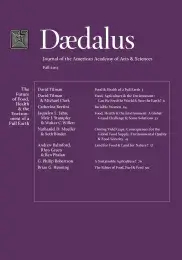Food, Health & the Environment: A Global Grand Challenge & Some Solutions
The dual burden of obesity and undernutrition is a significant public health challenge worldwide, especially in the context of a changing climate. This essay presents the most recent nutritional evidence for the optimal diet for long-term health, and offers some commentary on how production of these foods affects the environment. Current dietary research supports a diet rich in fruits and vegetables; nuts, legumes, fish, and some poultry as protein sources; unsaturated fats replacing saturated fats; whole grains replacing refined grain products; dairy foods in low to modest amounts; and minimal amounts of red meat and added sugar. This healthy dietary pattern also supports sustainable agriculture and environmental preservation.
Public health efforts worldwide have traditionally focused on alleviating undernutrition–inadequate calories and protein for optimal growth and development–but obesity has simultaneously risen as a major contributor to morbidity and mortality worldwide. Urbanization and globalization have enabled the widespread availability of foods of low nutritional quality and, compounded by declining physical activity, these result in positive energy balance and weight gain. For example, in Mexico, the prevalence of obesity has been steadily rising since the 1980s, and about 70 percent of the Mexican population is now overweight or obese.1 Concurrently, undernutrition remains a significant challenge in many low- and middle-income countries, where the double burden of overnutrition and undernutrition is particularly severe among low-socioeconomic strata in rural areas. Total caloric intake is often adequate, but the diet quality is declining: consumption of saturated and trans fats, sugar, and refined wheat or other grains have increased, while people are eating fewer legumes and whole-grain cereals. Despite the dramatic increase in knowledge regarding the impact of diet on human health over the past several decades, the prevalence of diabetes and other noncommunicable diseases is increasing worldwide, in . . .
